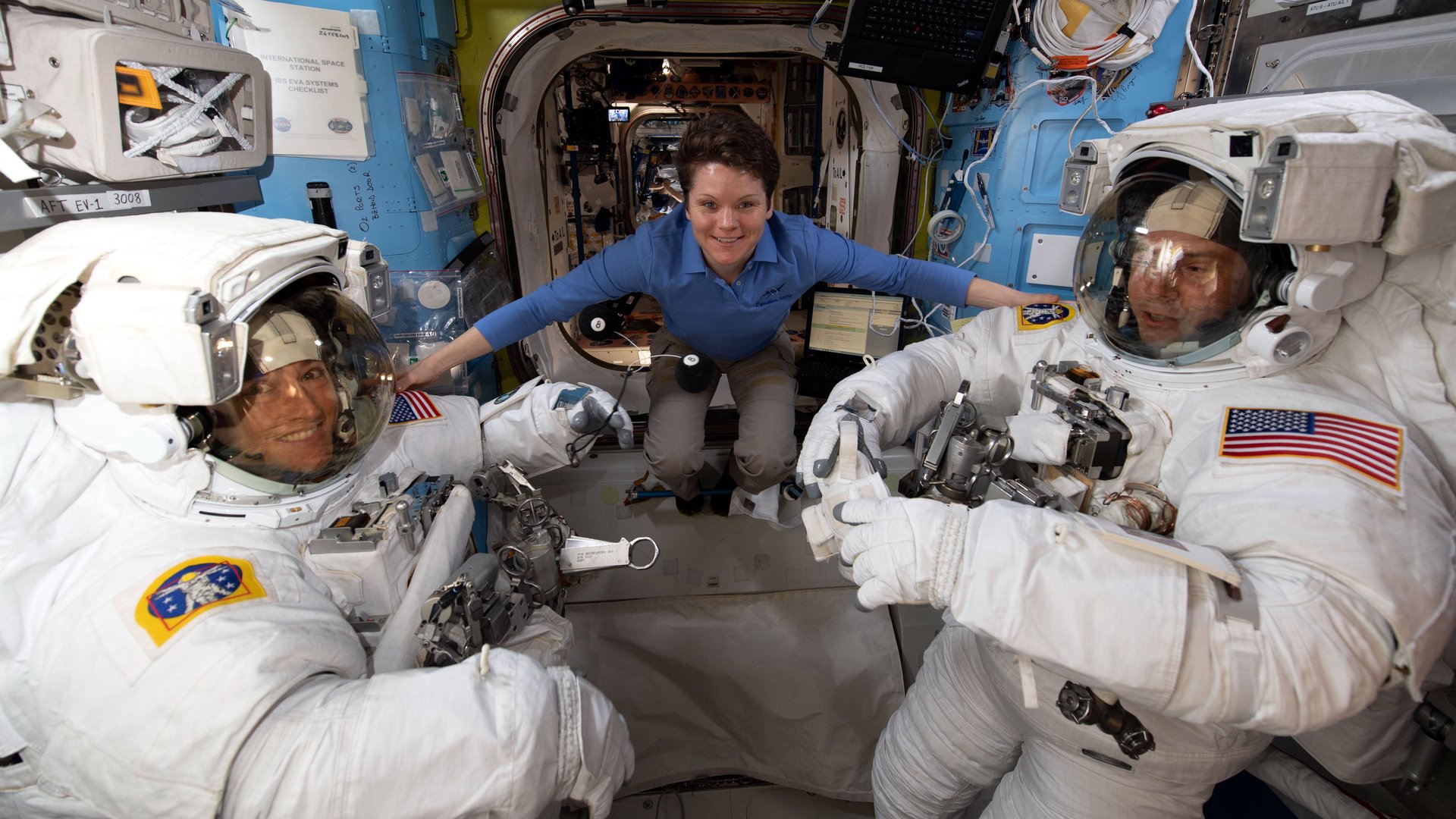First all-women spacewalk canceled over lack of medium-sized spacesuits
NASA’s plan to make a little space history with the first all-woman spacewalk has hit a snag: The right size spacesuit isn’t ready.


NASA’s plan to make a little space history with the first all-woman spacewalk has hit a snag: The right size spacesuit isn’t ready.
Astronauts Anne McClain and Christina Koch were expected to continue the installation of new lithium-ion batteries for the International Space Station’s solar energy system on March 29. Work on the project began on March 22 when McClain and another astronaut, Nick Hague, spent almost seven hours working in free fall outside the station.
“McClain learned during her first spacewalk that a medium-size hard upper torso—essentially the shirt of the spacesuit—fits her best,” NASA said in a news release announcing that Hague and Koch would handle the next stage of the task instead. “Because only one medium-size torso can be made ready by Friday, March 29, Koch will wear it.”
The mission had originally planned for Koch, a former US Army aviator, to wear a large-size torso for her spacewalk with McClain, an aerospace engineer.
The ISS only has one medium-sized hard upper spacesuit torso prepared for extra-vehicular activity (EVA), with the other acting as a spare. A NASA spokesperson told Quartz the station has two large torsos and one extra-large torso ready, plus a spare extra-large torso. Neither of the spares can be configured in time for the EVA planned for four days from now.
“We do our best to anticipate the spacesuit sizes that each astronaut will need, based on the spacesuit size they wore in training on the ground, and in some cases astronauts train in multiple sizes,” NASA spokesperson Brandi Dean told Quartz in an email. “However, individuals’ sizing needs may change when they are on orbit, in response to the changes living in microgravity can bring about in a body. In addition, no one training environment can fully simulate performing a spacewalk in microgravity, and an individual may find that their sizing preferences change in space.”
Working in a spacesuit is one of the most physically demanding of an astronaut’s duties. Though they are in free-fall, moving their arms and hands inside the suit requires them to push against the pressurized internal atmosphere that keeps them alive and the protective gauntlet of the suit itself. A poorly-fitting suit would seem likely to add unnecessary difficulty to a risky activity. Already, astronauts working multi-hour shifts lose track of tools that drop off into space.
The lack of spacesuit sizing options reflects the composition of NASA’s astronauts: The most recent class consisted of seven men and five women, but only 12 of the 38 currently active astronauts are women. Female astronauts have still been major participants in EVAs: Susan Helms shares the record for longest duration, spending nearly nine hours outside the airlock; Peggy Whitson has made 10 trips, for a cumulative 60-plus hours in free-fall.
An all-women spacewalk will have to wait, but McClain is scheduled for to head out the airlock again on April 8 alongside Canadian astronaut David Saint-Jacques.